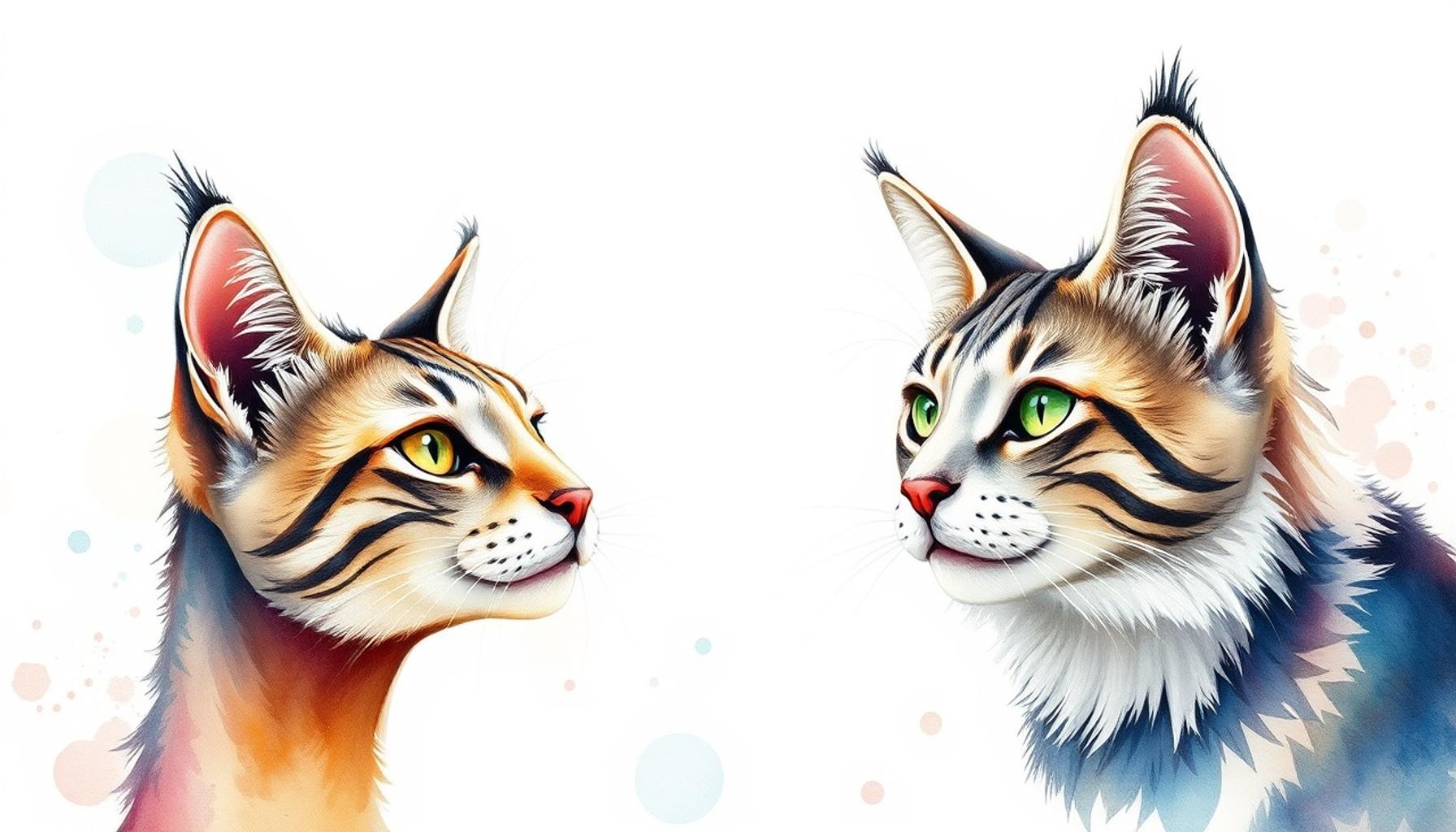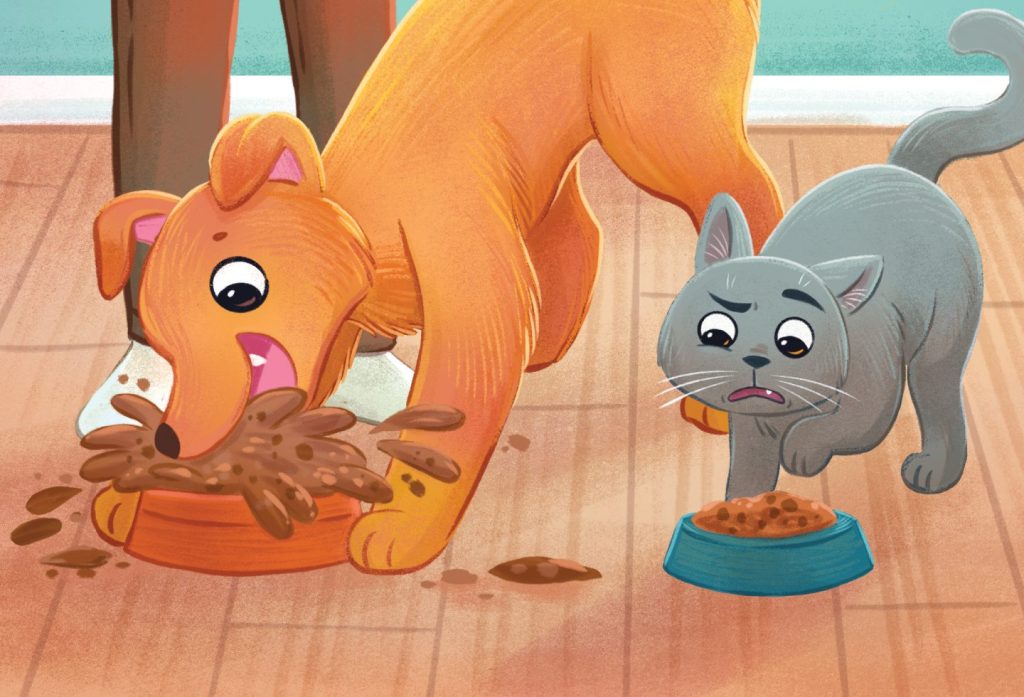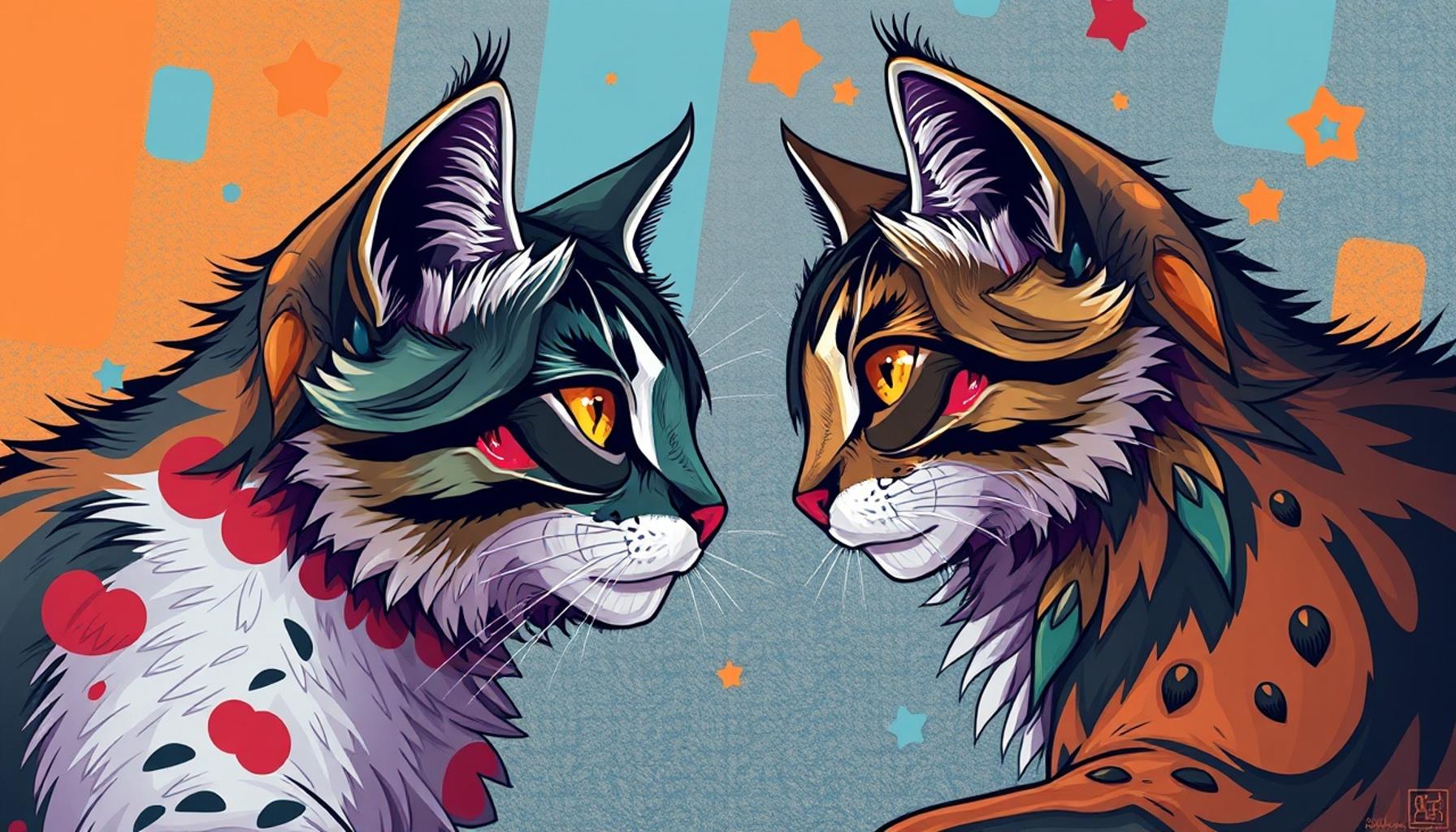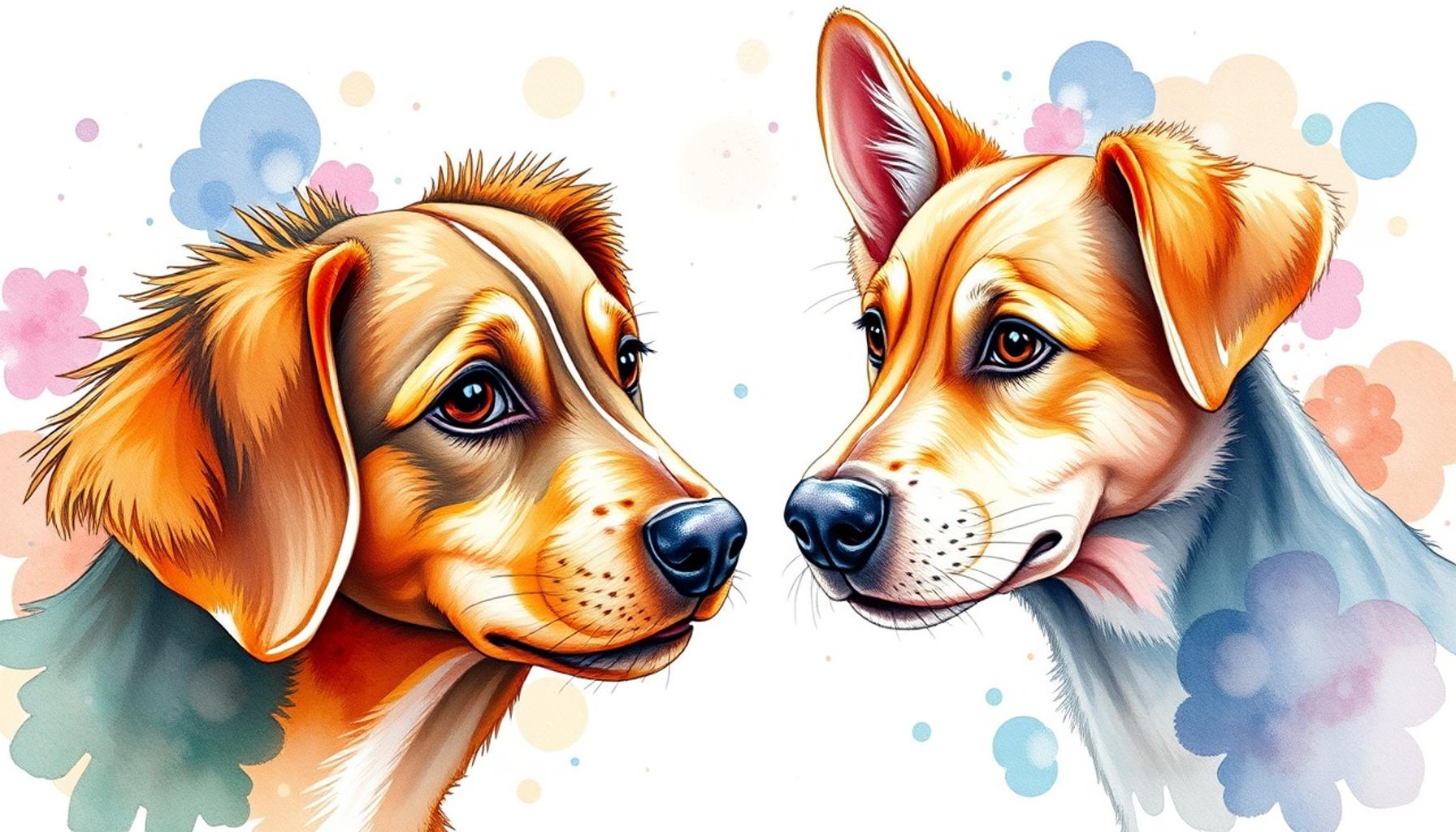The Role of Instinct in Pet Behavior: Comparing Dogs and Cats

Instincts: The Heart of Pet Behavior
In the world of pet behavior, instinct serves as an essential framework that shapes how dogs and cats relate to their surroundings and the humans in their lives. Instincts are the innate behavioral patterns that have evolved to ensure survival, affecting myriad actions from hunting and grooming to socialization. By delving deeper into these natural traits, pet owners can gain insights into the distinctive personalities exhibited by their cherished companions.
Key Differences in Instinctual Behavior
Despite sharing a history of domestication, the instinctual behaviors of dogs and cats diverge remarkably. Understanding these differences is crucial for enhancing our relationships with these animals. Take, for example, the following:
- Hunting Techniques: Dogs possess a strong pack mentality, which is reflected in their hunting strategies. Traditionally, breeds such as the Labrador Retriever or the German Shepherd were trained to work in teams, employing vocal commands and coordinated movements to pursue their prey. In contrast, cats typically operate as solitary hunters—think of a house cat stalking a mouse with stealth and precision. This solitary approach allows them to rely on their acute senses and agility, making them efficient predators.
- Territorial Marking: When it comes to claiming territory, cats exhibit distinctive solo behaviors. They often use scent marking through glands located on their face and paws, effectively communicating their presence to other cats while also establishing their territory. Dogs, meanwhile, engage in more overt territorial displays, such as barking and physical posturing, and may mark territory through urination, reinforcing their claim over an area.
- Social Interaction: Dogs are inherently sociable animals, thriving on pack dynamics where structure and hierarchy play significant roles. They enjoy participating in group activities, such as play dates at the dog park or attending obedience classes. Conversely, cats often prefer a solitary existence. While they can form bonds with humans and may enjoy company, their social interactions are often dictated by personal choice, unlike the more communal nature of dogs.
Recognizing these instinctual differences not only aids in nurturing better relationships with our pets but also invites us to engage in broader conversations about animal behavior. For instance, why do dogs instigate tail wagging when they’re excited? Or why do cats purr, often in the presence of humans? These behaviors are deeply rooted in the animals’ instincts, and understanding them can reveal much about their emotional states and communication methods. As we explore the instinctual behaviors of dogs and cats, we not only better comprehend these beloved species but also deepen the human-animal bond that enriches our lives. Ultimately, this understanding enhances our capacity to provide the right care and training, ensuring our pets feel fulfilled and happy in their environment.
DON’T MISS OUT: Click here to discover effective training techniques
The Nature of Instinctual Drives
To truly appreciate the instinctual behaviors that manifest in our pets, one must consider the evolutionary backgrounds of both dogs and cats. These instinctual drives are not merely random acts; they are deeply embedded in the genetic blueprints of these species, shaped by thousands of years of adaptation and survival strategies. Understanding these innate behaviors not only enhances our awareness but can also improve our interactions with our four-legged companions.

Understanding the Canine Instincts
Dogs, having descended from wolves, have retained many of their ancestors’ natural behaviors. Their instincts are often geared toward social interaction and cooperative hunting. Here are some instinctual behaviors that define dogs:
- Pack Dynamics: As pack animals, dogs rely heavily on social structures. This instinct drives them to seek companionship and obedience from humans, who they view as part of their pack. Training techniques that resonate with this pack mentality, such as positive reinforcement, can significantly improve behavior.
- Protective Instincts: Many dog breeds exhibit protective behaviors, an instinctual response that stems from their roles as guardians within a pack. This is evident when dogs bark to alert owners of intruders or exhibit protective postures around their family members.
- Chasing and Fetching: The instinct to chase prey—be it a ball, a squirrel, or even a shadow—is a remnant of their ancestral hunting habits. Engaging dogs in activities that stimulate their predatory instincts can lead to healthier, happier pets.
Decoding Feline Instincts
On the other hand, the instinctual behaviors exhibited by cats are more nuanced and often reflect their solitary hunting past. Unlike dogs, cats do not rely on social structures for survival, which shapes their behavior in distinctive ways:
- Self-Sufficiency: Cats are natural hunters that possess an instinctual drive to hunt alone. Their ability to stalk and capture prey is critical for their survival. This is why indoor cats may engage in play that mimics hunting behaviors, such as pouncing on toys or chasing after laser pointers.
- Grooming and Cleanliness: Cats have an instinctual predisposition to groom themselves meticulously. This serves not just for hygiene, but also as a way to regulate their scent and remain discreet in their environment, a trait useful for a predator.
- Scent Communication: Unlike dogs, whose instinctual behaviors often focus on visual indicators, cats lean heavily on scent to communicate. They mark their territories through scent glands located on their body to establish presence, which is often a subtle yet potent form of communication.
As we dive deeper into the instinctual behaviors of these beloved pets, we start to uncover a fascinating tapestry interwoven with their histories and the roles they play in our lives today. Recognizing and respecting these instincts not only enriches our connection with our pets but also helps us to curate an environment where they can thrive, both physically and emotionally. With further exploration, pet owners can gain valuable insights into effectively meeting the needs of their companions, enhancing overall well-being and harmony in the human-animal bond.
The Role of Instinct in Pet Behavior: Comparing Dogs and Cats
As we delve deeper into the fascinating world of pet behavior, it becomes essential to understand the role of instinct and how it shapes the actions of our beloved pets. Both dogs and cats exhibit a variety of instincts that dictate their behaviors, but these instincts have developed along different evolutionary pathways.
Dogs, descendants of wolves, have adapted to be pack animals. Their instincts drive them to seek companionship and establish a hierarchical relationship with humans, allowing them to thrive in social environments. This innate desire for belonging is what makes dogs such loyal and trainable companions. Social behaviors such as barking to alert humans or displaying submissive gestures are clear manifestations of their instinctual tendencies.
On the other hand, cats, with ancestors that were solitary hunters, exhibit a range of behaviors quite distinct from those of dogs. Their instinctual drive for independence influences their need for personal space and territoriality. Cats are primarily motivated by their predatory instincts, leading them to play or exhibit stalking behaviors when they chase toys, mimicking the hunting tactics of their wild forebears.
The contrast between these instinctual behaviors brings to light essential differences in how each species communicates and interacts with humans and their environments. Understanding these instinctual bases goes beyond mere observation; it invites a deeper exploration into how pet owners can nurture these instincts to cultivate a harmonious relationship with their pets.
| Instinct in Dogs | Instinct in Cats |
|---|---|
| Pack mentality; seek social bonding | Solitary hunting; value independence |
| Submissive behaviors; loyalty to humans | Territorial nature; cautious interactions |
Through this exploration, it is vital to consider the implications of these instincts on pet training and socialization. If pet owners can harness the natural behaviors of both dogs and cats, they can significantly enhance the quality of life for their pets while ensuring harmonious coexistence in their homes.
The interplay of instinct in both species serves as a reminder of their unique evolutionary context and behavioral traits, providing pet owners an opportunity to better understand and appreciate their furry companions.
DISCOVER MORE: Click here to learn how pets can enhance child development
The Influence of Instinct on Pet Ownership
The instinctual behaviors of dogs and cats not only define their actions but also shape the way we engage with them as pet owners. Understanding these instinctual drives facilitates a deeper connection between humans and their pets, ultimately creating an environment that nurtures both mental and physical well-being. By appreciating how instincts manifest, we can tailor our care and training methods to fit the natural inclinations of each species.
Behavioral Training and Socialization
When it comes to dogs, socialization and training are areas significantly influenced by instinctual behaviors. For instance, because dogs are pack animals, they thrive on routine and clear hierarchies.
- Positive Reinforcement: Training methods that utilize positive reinforcement not only align with their instinctive need for social acceptance but also encourage bonding and loyalty, resulting in a more obedient pet. Behavioral research has shown that dogs trained through positive reinforcement often develop deeper emotional connections with their owners.
- Interactive Play: Engaging dogs in interactive activities that mimic their natural behaviors—such as fetch or tug-of-war—promotes healthy exercise, mental stimulation, and satisfies their innate chasing instinct. This integrated playtime serves to expend energy, thus reducing destructive behaviors that stem from boredom or lack of activity.
The Cats’ World of Solitude and Intellectual Stimulation
In contrast, pet owners must adapt their approaches when it comes to understanding and meeting the needs of cats. The solitary instincts ingrained in cats lead to different care requirements and behavioral expectations:
- Enrichment through Environment: As natural hunters, cats require environmental enrichment that allows them to express their instincts. This could involve providing climbing structures, scratching posts, and puzzle feeders that engage their senses and encourage problem-solving, thus resembling stalking scenarios.
- Respecting Space: Acknowledging a cat’s need for solitude is critical to their well-being. Unlike dogs, who often relish in social interaction, cats require their personal space, which allows them to exhibit instinctual behaviors such as hiding and observing their surroundings. Creating a cat-friendly environment, such as providing cozy hiding spots, can help them feel secure and safer.
Instinctual Communication Styles
Communication styles between dogs and cats are also profoundly shaped by their instincts. While dogs often communicate through vocalization and body language, cats express themselves in subtler ways:
- Dogs’ Vocal Communication: Dogs frequently bark, growl, or whine to convey emotions and react to stimuli. Understanding these vocalizations is crucial for owners. For example, a dog’s bark can signify excitement, anxiety, or alerting to perceived threats.
- Cats’ Non-Verbal Cues: Cats rely more on non-verbal cues such as tail position, ear orientation, and vocalizations like purring or hissing for communication. Their instinct-driven behaviors, such as kneading or head-butting, reflect their comfort levels and trust in their human companions.
Various studies have found that pet owners who can decode these instinctual forms of communication report stronger bonds with their pets. By recognizing and respecting the different instinctual behaviors of dogs and cats, pet owners elevate their understanding, paving the way for more harmonious relationships.
DISCOVER MORE: Click here to learn how pets can benefit child development
Conclusion
In understanding the role of instinct in pet behavior, it becomes clear that both dogs and cats exhibit unique traits shaped by their evolutionary backgrounds. For dog owners, nurturing instinctual behaviors, such as their pack mentality and need for social interaction, is essential for fostering obedience and a strong bond. By employing positive reinforcement and engaging in instincts-based play, pet owners can channel these innate drives into positive outcomes, enrich their dog’s life, and reduce potential behavioral issues.
Conversely, cat owners must embrace the solitary instincts of their feline companions. Recognizing that cats require personal space and the opportunity to engage in hunting-like behaviors creates a fulfilling environment for them. Environmental enrichment, such as climbing structures and interactive toys, not only satisfies their instincts but also supports their mental health, ultimately fostering a sense of security.
The differences in communication styles between these two species highlight another layer of complexity, as dogs rely heavily on vocalizations while cats use subtler body language. This emphasizes the need for pet owners to be proactive in interpreting their pets’ signals, which can lead to a stronger bond and enhanced understanding.
As we deepen our appreciation of these instinctual behaviors, we not only learn to live harmoniously with our pets but also gain insights into their emotional and physical needs. Recognizing and respecting the instincts that drive both dogs and cats allows pet owners to be more attuned to their companions, offering a rewarding journey filled with love, companionship, and shared understanding.


